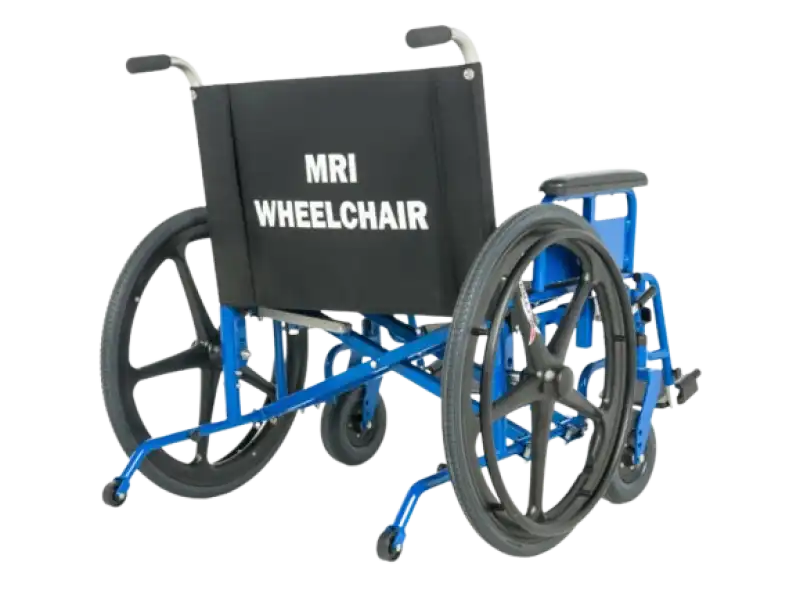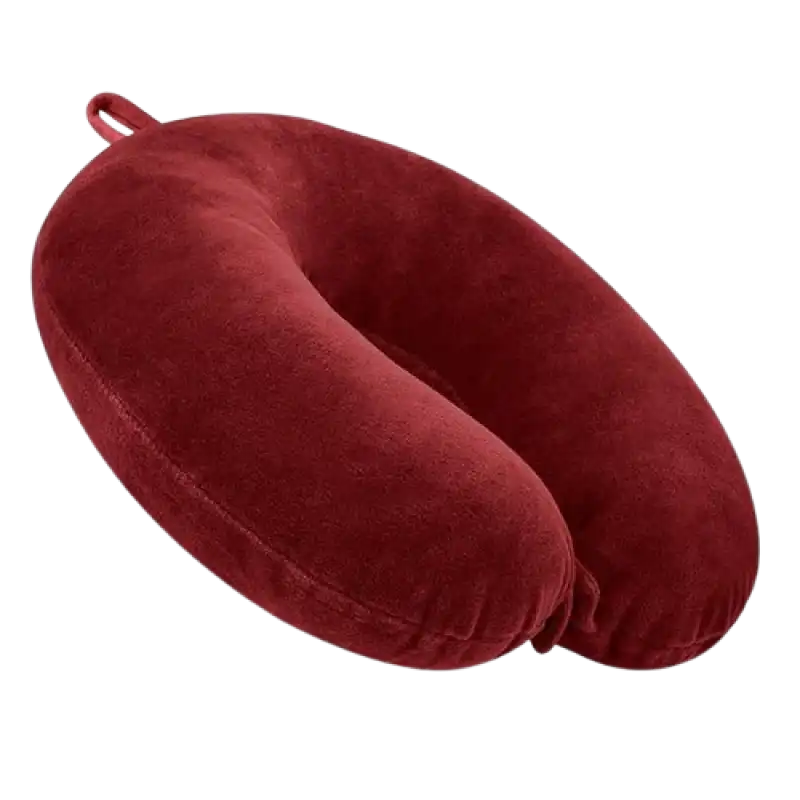Introduction
When it comes to mobility aids, not all wheelchairs are the same. In medical environments, particularly in MRI (Magnetic Resonance Imaging) rooms, specialized wheelchairs are required for safety reasons. But what sets MRI-compatible wheelchairs apart from regular ones? In this guide, we’ll explore the differences between MRI-compatible and standard wheelchairs, their unique features, and when to use them.
1. Understanding MRI-Compatible Wheelchairs
What Is an MRI-Compatible Wheelchair?
An MRI-compatible wheelchairs is designed to be used in MRI rooms without causing interference with the magnetic field. These wheelchairs are made from non-magnetic materials, ensuring patient safety and accurate scan results.
Key Features of MRI-Compatible Wheelchairs:
- Non-Magnetic Materials: Made from aluminum, titanium, or reinforced plastic instead of steel.
- RF-Safe Construction: Prevents radiofrequency interference with MRI machines.
- Rust-Resistant Components: Suitable for sterile medical environments.
- Specialized Brakes & Wheels: Designed to function safely in MRI rooms.
💡 Tip: Always check if the wheelchair is labeled "MR Conditional" or "MRI-Safe" before using it in an MRI environment.
2. What Is a Regular Wheelchair?
Definition & Uses
A standard wheelchair is the most common type used for daily mobility support. These wheelchairs are built with various materials, including steel, aluminum, and composite plastics.
Key Features of Regular Wheelchairs:
- Wide Range of Materials: Typically includes metal frames with rubber or plastic components.
- Versatile Designs: Available in manual, powered, and transport options.
- Cost-Effective: More affordable than MRI-compatible models.
- Durability & Strength: Made for long-term use indoors and outdoors.
💡 Tip: Regular wheelchairs should never be brought into an MRI room unless explicitly labeled as MRI-safe.
3. Key Differences: MRI-Compatible vs. Regular Wheelchairs
| Feature | MRI-Compatible Wheelchairs | Regular Wheelchairs |
|---|---|---|
| Material | Non-magnetic (Aluminum, Titanium, Plastic) | Steel, Aluminum, Composite Materials |
| Safety in MRI Rooms | 100% Safe, Non-Interfering | Unsafe, Can Cause Accidents |
| Weight | Lightweight | Generally Heavier |
| Durability | Designed for Hospital Use | Suitable for Everyday Mobility |
| Cost | More Expensive | More Affordable |
| Usage | Medical Facilities, Hospitals, Clinics | Homes, Outdoors, Public Spaces |
💡 Key Takeaway: MRI-compatible wheelchairs are specialized medical devices designed for safe use in MRI rooms, while regular wheelchairs are built for general mobility needs.
4. Why Is an MRI-Compatible Wheelchair Necessary?
MRI machines generate powerful magnetic fields that can attract metal objects with tremendous force. A regular wheelchair with steel components can pose serious risks:
Potential Dangers of Using a Regular Wheelchair in an MRI Room:
- Magnetic Pull: Can be drawn toward the machine, causing injury.
- Image Distortion: Metal parts can interfere with scan accuracy.
- Equipment Damage: MRI machines are highly sensitive, and interference can lead to costly repairs.
💡 Tip: Hospitals must ensure all mobility aids in MRI rooms are certified as MRI-safe to prevent accidents.
5. Who Needs an MRI-Compatible Wheelchair?
MRI-Compatible Wheelchairs Are Essential For:
- Patients requiring mobility assistance during MRI scans
- Hospitals and diagnostic centers with MRI facilities
- Caregivers transporting patients into MRI rooms
- Medical professionals ensuring a safe scanning environment
Regular Wheelchairs Are Ideal For:
- Daily mobility support at home, work, or outdoors
- Rehabilitation and physical therapy needs
- Temporary injury recovery
- Long-term disability support
💡 Tip: Even if you own a regular wheelchair, you may need to transfer into an MRI-compatible wheelchair before entering an MRI room.
6. Choosing the Right MRI-Compatible Wheelchair
When selecting an MRI-safe wheelchair, consider these factors:
- Material Composition: Ensure the wheelchair is made from non-magnetic materials like aluminum or reinforced plastic.
- Certification & Safety Labels: Look for labels such as "MR Conditional" or "MRI-Safe" to confirm compatibility.
- Comfort & Adjustability: Choose a model with adjustable armrests, footrests, and seat padding for patient comfort.
- Weight Capacity: Ensure it can support the user’s weight while maintaining maneuverability.
- Ease of Cleaning: Medical wheelchairs should have easy-to-clean, antimicrobial surfaces to maintain hygiene.
💡 Tip: Hospitals should have multiple sizes of MRI-compatible wheelchairs to accommodate different patients.
7. Maintenance & Care for MRI-Compatible Wheelchairs
🔧 Routine Maintenance Tips:
- Clean regularly with disinfectants to maintain hygiene.
- Inspect for wear and tear, especially on wheels and brakes.
- Store in a designated MRI-safe area to prevent mix-ups with regular wheelchairs.
🔧 Common Issues to Watch Out For:
- Loose non-magnetic screws or fasteners
- Worn-out brake systems
- Damage to MRI-compatible wheel covers
💡 Tip: Regular maintenance extends the lifespan of an MRI-compatible wheelchair and ensures safety compliance.
8. Frequently Asked Questions (FAQs)
1. Can I bring my personal wheelchair into an MRI room?
No, unless it is explicitly labeled as MRI-compatible. Most personal wheelchairs contain magnetic materials that can be dangerous in an MRI environment.
2. How can I identify an MRI-compatible wheelchair?
Look for safety labels such as "MR Safe" or "MR Conditional." Hospitals and MRI facilities typically provide these wheelchairs.
3. Are MRI-compatible wheelchairs more expensive?
Yes, because they are made from specialized materials and undergo strict safety testing. However, they are a necessary investment for medical facilities.
4. Can an MRI-compatible wheelchair be used as a regular wheelchair?
Yes, but they are primarily designed for MRI use. They may not offer the same level of comfort or features as standard wheelchairs for daily mobility.
5. What should I do if I accidentally bring a regular wheelchair into an MRI room?
Immediately inform medical staff. Do not attempt to remove it yourself, as the magnetic field can cause sudden movement, leading to injury.
Conclusion
MRI-compatible and regular wheelchairs serve distinct purposes. MRI-compatible wheelchairs are essential for hospitals and diagnostic centers, ensuring patient safety during scans. Regular wheelchairs, on the other hand, are ideal for everyday mobility. When entering an MRI room, always use the appropriate wheelchair to prevent accidents and ensure accurate scan results.
For high-quality MRI-compatible and regular wheelchairs, explore Aarogyaa Bharat for trusted mobility solutions.












